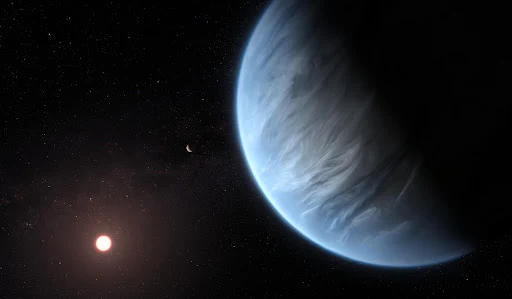Researchers Discover Water Vapor in Atmosphere of Planet K2-18b
Astronomers using the NASA/ESA Hubble Space Telescope have discovered water vapor in the atmosphere of K2-18b, an exoplanet orbiting a red dwarf star about 110 light-years from Earth. This is the first time water vapor has been detected in the atmosphere of an exoplanet that is both potentially habitable and the size of Earth.
K2-18b is a super-Earth, meaning it is larger than Earth but smaller than Neptune. It orbits its star in the habitable zone, the region around a star where liquid water could exist on the surface of a planet.
The researchers used a technique called transit spectroscopy to detect the water vapor in K2-18b's atmosphere. This technique involves observing the planet as it passes in front of its star. As the planet transits, some of the starlight passes through its atmosphere, and the atmosphere's composition can be determined by analyzing the starlight.
The researchers found that K2-18b's atmosphere contains between 0.01% and 50% water vapor. This is a wide range, but it is still significant because it is the first time water vapor has been detected in the atmosphere of an exoplanet that is both potentially habitable and the size of Earth.
The discovery of water vapor on K2-18b is a major milestone in the search for life beyond Earth. Water is considered to be essential for life as we know it, and its presence on K2-18b suggests that the planet may be habitable.
However, it is important to note that the presence of water vapor does not guarantee that K2-18b is actually habitable. Other factors, such as the planet's temperature and atmospheric composition, also play a role.
The researchers plan to continue studying K2-18b to learn more about its atmosphere and to determine whether it is truly habitable. They also plan to search for other planets in the K2-18 system, as the presence of multiple planets would make the system even more likely to be habitable.
The discovery of water vapor on K2-18b is an exciting step forward in the search for life beyond Earth. It shows that there are other planets in the universe that could potentially support life, and it gives us hope that we may one day find other Earth-like planets that are home to life.
